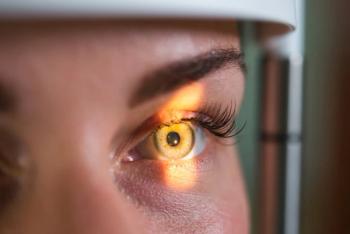
The fanciest new toys in modern cataract surgery
San Diego-Glenn Cook, MD, PhD, Jim Owen, OD, MBA, FAAO, and Walt Whitley, OD, MBA, FAAO, kicked off Friday morning’s education at the annual meeting of the American Optometric Association with a cutting edge discussion of the most performed surgery in the U.S.-cataract surgery. In New Advances in Cataract Surgery, the presenters detailed specific new technologies, explaining how they have revolutionized procedures and improved results.
The conversation began with a poignant question posed by Dr. Whitley: Can we take cataract surgery to the next level with femtosecond lasers? Most LASIK surgeons must think so, since according to Dr. Whitley their use of femtosecond has increased from 7% to 70% in only a few short years. Why? It reduces variability in flaps.
Dr. Whitley has experience with the Victus femtosecond laser, which he said was the first platform to do cataract and LASIK. Obviously, this is a big investment benefit for many surgeons. Also, unlike current phaco systems, the Victus femtosecond creates the incision. The laser’s ability to do a consistent capsulotomy is a big benefit, as it reduces PCO among other things.
Another new technology that has practical benefits for many practices is the LENSAR. This unit is mobile, which means you can move it from room to room. It also reduces phaco time, and less phaco energy reduces inflammation.
Dr. Cook, who uses the LenSx laser system (Alcon), said he saw 12 cases in clinic recently and every patient had a clear cornea from day one. “The incisions in the cornea are pristine,” he said. “Let’s face it. Lasers are better at making little circles than human hands are.”
Dr. Owen also briefly discussed the Catalys laser system (OptiMedica), citing its ability to reduce ultrasound energy as a big benefit. It’s a liquid interface, which gives the clinician a better image of the lens and cornea, as well as less IOP rise, he said.
Wavefront intraoperative aberrometry is another huge advance in cataract surgery, according to Dr. Cook, who refuses to do any premium IOLs in his practice without using the ORA (Optiwave Refractive Analysis [WaveTec Vision]) system-even though its use is not a covered benefit. Dr. Cook said that in his practice, 40% of the time, the pre-op IOL calculation is different from the aphakic ORA-derived IOL calculation. And, Dr. Cook added, he has never had to replace an ORA calculated lens.
Dr. Cook has also switched to TrueVision (TrueVision Systems Inc.), so his OR team sees everything. “Everybody in the OR is swimming in the eye with you, which has an enormous impact,” he said. For instance, staff can see if something is going wrong or if something is needed, and they can start scrambling without being told.” TrueVision also creates a heads-up environment, which means the surgeon isn’t hunched over all day.
Finally, another big advantage of TrueVision, according to Dr. Cook, is that it tells you where to put the incision so that you end up with zero residual astigmatism. Likewise, the unit displays where to place limbal relaxing incisions and the toric IOL.
Cataract surgery has come a long way in a short time, thanks to technologies such as these.ODT
Newsletter
Want more insights like this? Subscribe to Optometry Times and get clinical pearls and practice tips delivered straight to your inbox.








































